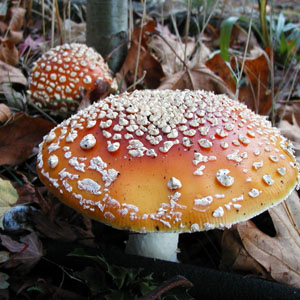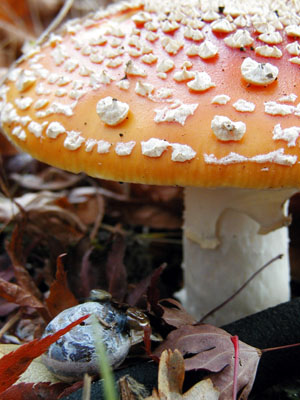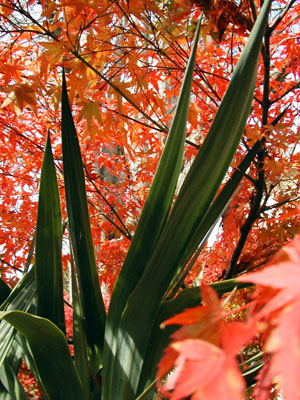Shroom To Grow
The amanita muscaria—or, as I call them, the "feta pizza mushrooms"—that turned up unannounced last year near the pine tree in the front yard are back. There seem to be about as many this year, although they're definitely flexing their muscles a little: when one of these decides it wants to push up a fruiting body under a brick…it'll lift the brick right out the way.

Two amanita muscaria (a.k.a. fly agaric) mushrooms in the front yard
As I've been watching the local squirrel population scamper around chasing seeds—and the local raccoons amble about the yard like they own the place—I've been wondering who might be taking nibbles out of these mushrooms. Although the caps are about as big (or bigger!) than portabellos, they're supposed to be toxic and I never see one disappear outright as if it had been eaten. But many of them tend to accumulate what look like little bite marks and nibbles. I think I might have found part of the answer: if you look at the lower left in the image above, you'll see these mushrooms have visitors. Here's a clearer picture:

Slowly stalking the fungus
Apropos to the Japanese maple on one side of the house that always puts on a glorious autumn display, the seemingly more-determined Japanese maple out front always hangs on to its leaves longer, but rarely puts on a very colorful end-of-year show. Except this year, when for a few days it got as bright as its nearby cousin. It made for a neat contrast, since the maple grows above and behind what I call a "sword palm" (sorry, I don't know what the species is called, but they're hardy in the Seattle climate, and pretty common in landscaping around here.) Makes for a classic holiday color combination.

Maple and palm, deciduous and evergreen
- Categories:
- Great Navel Battles
Hey, what's life without fine print?
